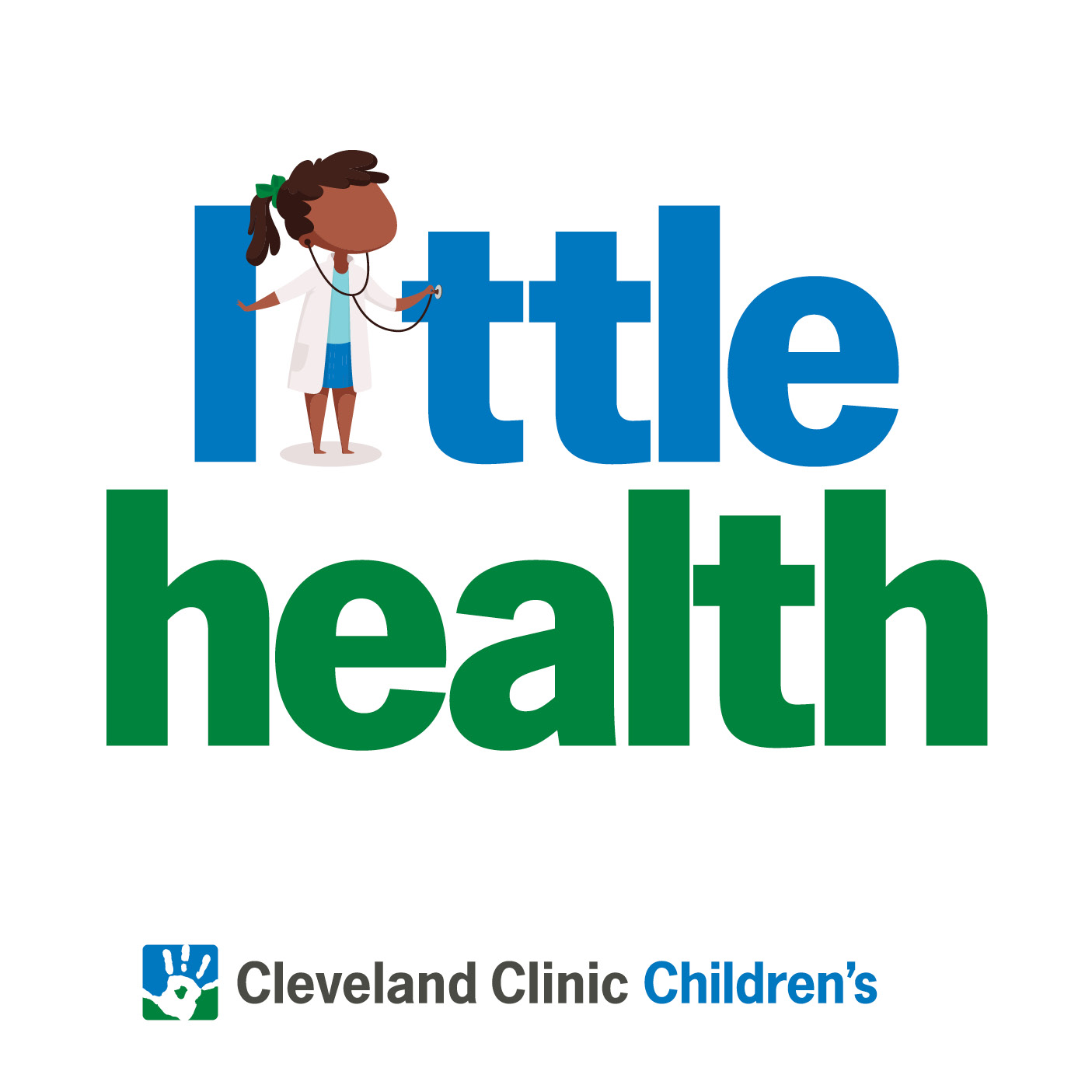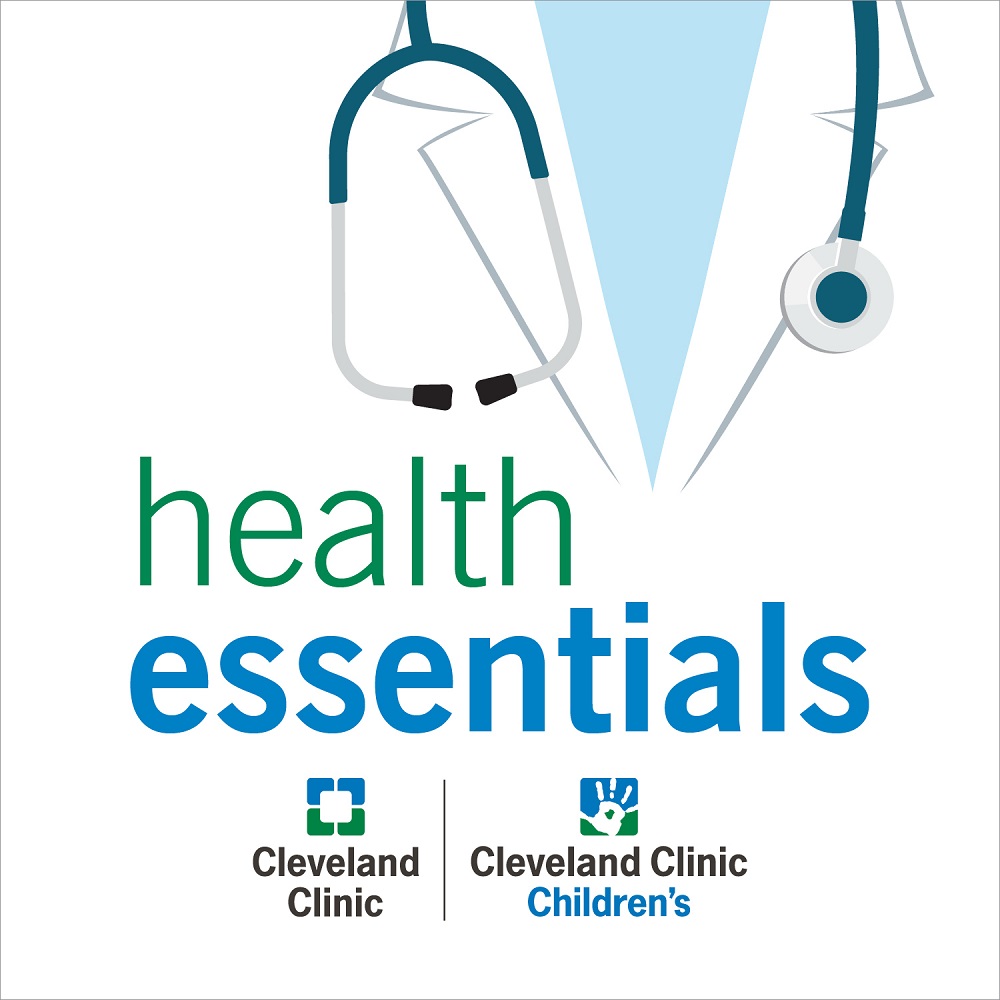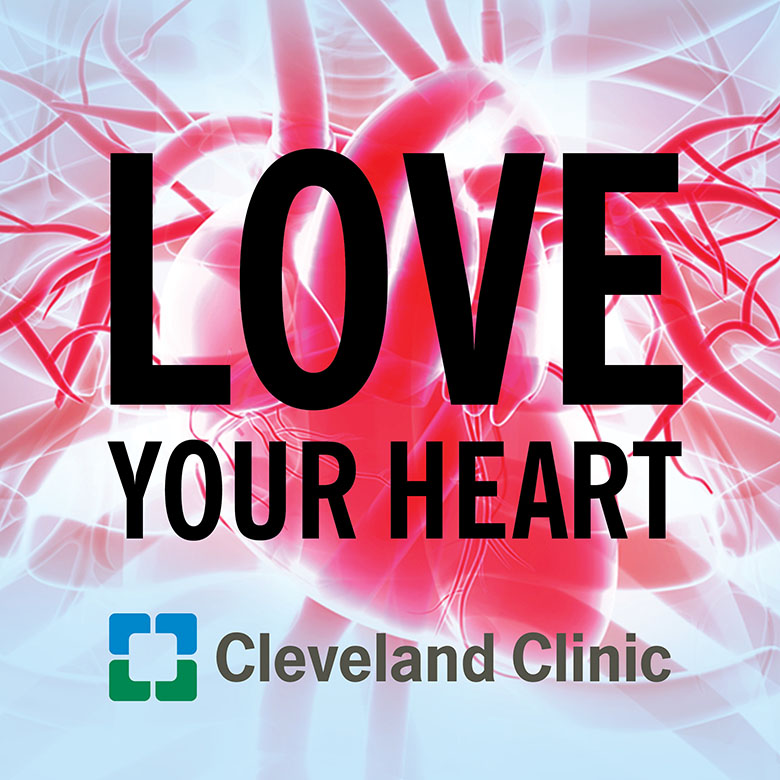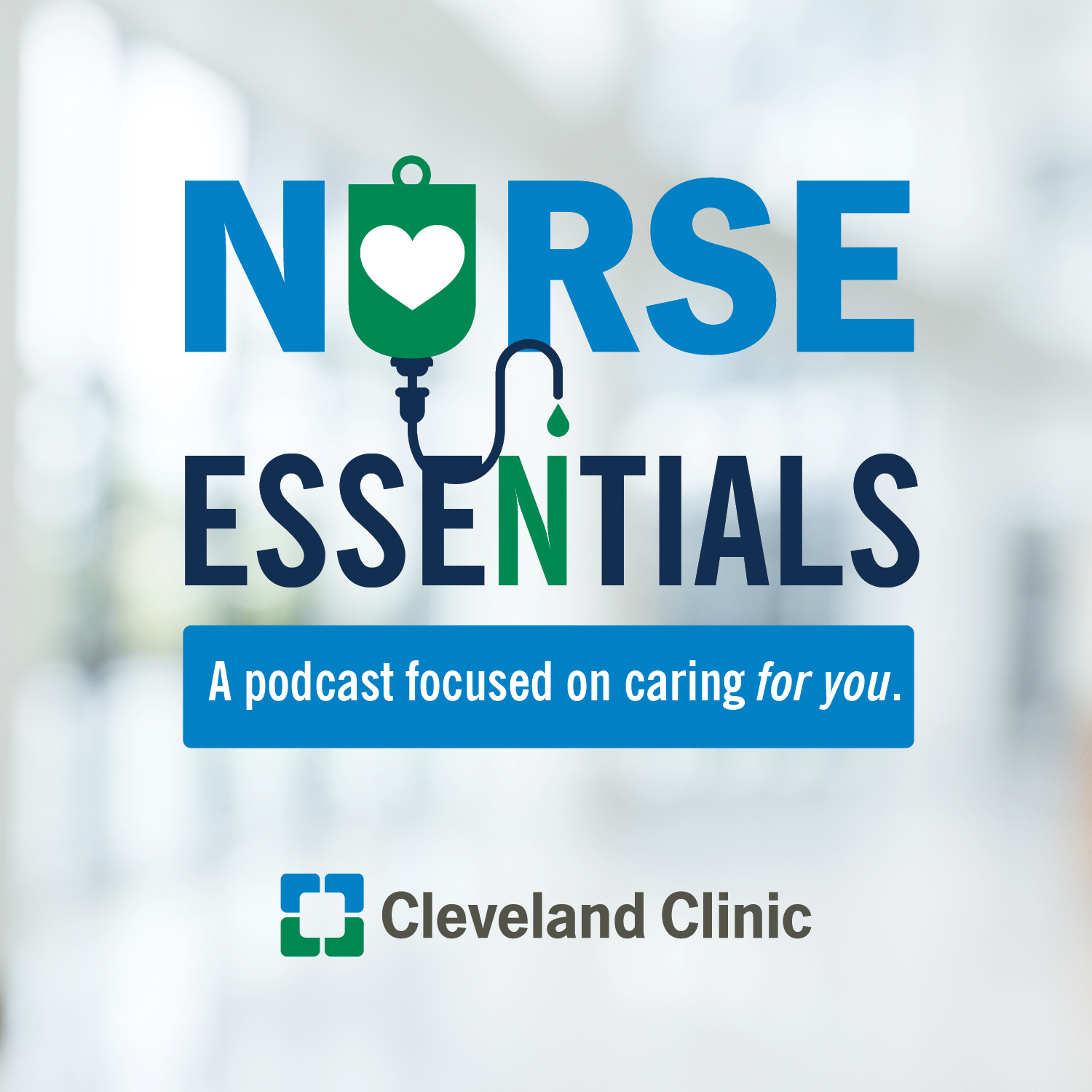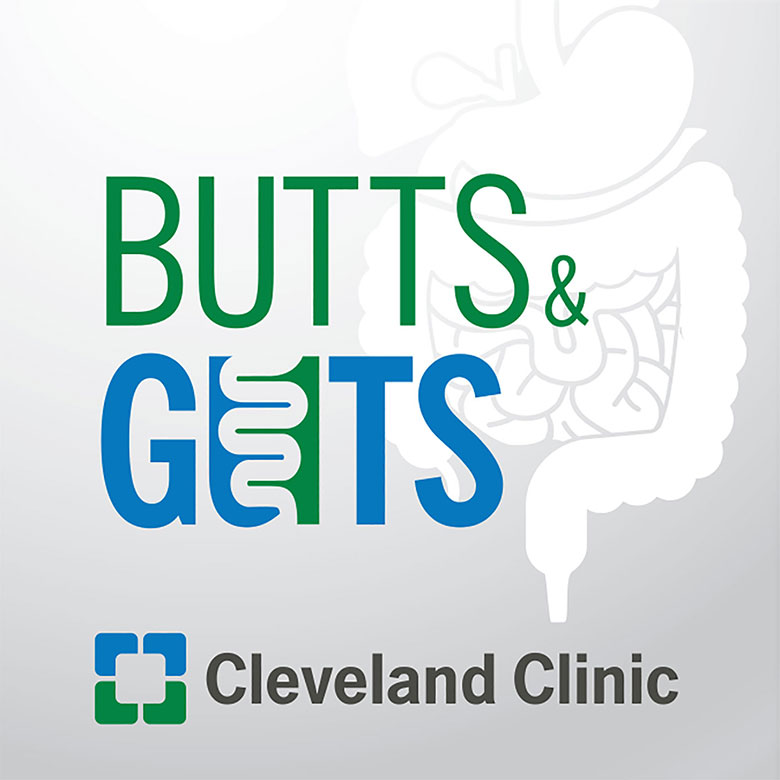The Future of Sickle Cell: Gene Therapy Explained
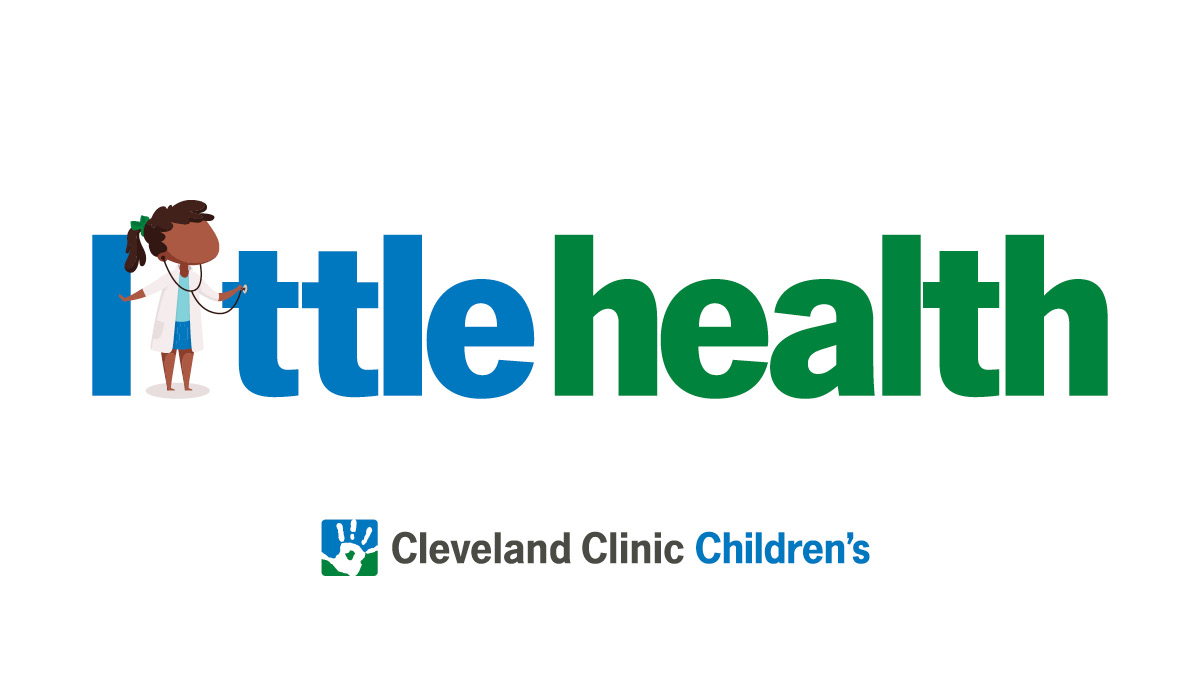
Subscribe: Apple Podcasts | Podcast Addict | Buzzsprout | Spotify
The Future of Sickle Cell: Gene Therapy Explained
Podcast Transcript
Speaker 3: Welcome to Little Health, a Cleveland Clinic Children's Podcast that helps navigate the complexities of child health one chapter at a time.
In each session, we'll explore a specific area of pediatric care and feature a new host with specialized expertise. We'll address parental concerns, answer questions, and offer guidance on raising healthy, happy children. Now, here's today's host.
Dr. Seth Rotz: Welcome back to Little Health. I'm your host, Dr. Seth Rotz, a pediatric hematologist oncologist at Cleveland Clinic Children's.
Today is part of our season on pediatric cancer and blood disorders. We're talking about a topic that's bringing hope to many, gene therapy in sickle cell disease. Is it a cure? How does it work? What does the process really look like? We'll be breaking down the science behind this groundbreaking treatment.
Our guest today is Dr. Rabi Hanna, a pediatric hematologist oncologist at Cleveland Clinic Children's, who specializes in sickle cell disease, bone marrow transplantation, and gene therapy. Welcome to Little Health, Dr. Hanna.
Dr. Rabi Hanna: Thank you so much, Dr. Ratz, for inviting me.
Dr. Seth Rotz: Well, thanks for being here. Um, would you be able to tell our audience a little bit about, um, the patients that you typically see and what your practice is like here at Cleveland Clinic?
Dr. Rabi Hanna: Sure, I'll be happy to tell you. So I wear many hats. One of them, it's really as a pediatric hematology oncology taking care of what I call life threatening diseases that would require usually bone marrow transplantation.
This could include malignant diseases like acute myeloid leukemia or increasingly now non malignant diseases of immune deficiency, immune dysregulation or blood diseases that can be cured by, uh, altering the hematopoietic cells, uh, through a bone marrow transplant. Example for that would be sickle cell disease, thalassemia, or bone marrow failure diseases like Fanconi anemia and others.
Dr. Seth Rotz: Well, I think, you know, the goal for today's conversation is to talk about gene therapy for sickle cell disease, but I think before we get to it, it'd be helpful to talk about a couple things first.
Could you, um, tell our audience a little bit about what sickle cell disease is, how it manifests, what we know about it, and what typical treatments look like for it?
Dr. Rabi Hanna: Absolutely. I'm happy to talk about the topic very close to my heart. Sickle cell disease is inherited blood disease. You are born usually with this disease due to defect in the gene.
Uh, think of our genes are the codes, are the letters that they make the word that instruct the body how to make red blood cells. In general, it should be round, it should be flexible, it carries the oxygen to all the different bodies, uh. But in sickle cell, due to a defect, uh, think of a word tasty, for example, if you change the letter T to N, it could become nasty.
So it truly, totally different. That's what happened in red blood cell. The shape now when it is in a low oxygen settings becomes sickle cell shape or croissant shape and that will lead to the cells getting attached to each other and clogging basically the blood vessels which will mean the oxygen doesn't reach very important parts of your body. It could be a bone. So it can cause severe pain. It can be in more important organs, like the brain, and it can cause a stroke.
And we have known about this disease for more than a hundred years. Uh, traditionally, it has been all just supportive care until in the 60s, 70s, when we have learned to do newborn screening, the increased risk of infection. So we start to give antibiotics early to protect from infection.
Later in the 80s, we start to give hydroxyurea, which is a low dose of chemotherapy that seems to help decrease the pain crisis for many patients. And with additional supportive care, the patient were improving and surviving childhood to adult.
But despite of all of that care, many of them will die from complication, including heart failure, kidney failure, lung issues for this patient. And the life expectancy for many of sickle cell, which affects mainly African American and Hispanic in the United States is half of what it is for the normal adult in the United States.
Dr. Seth Rotz: Yeah. Thanks for describing that. And actually, as an aside, I was with my kids at the Natural History Museum a couple of weeks ago, and even though they've done the big renovation at Cleveland's Natural History Museum, they actually have an exhibit on sickle cell, and they show how the sickle cells get stuck in the blood vessels. So it's a pretty neat little exhibit they have, and some info on gene therapy.
But before we get to gene therapy, can you talk a little bit about the role of allogeneic bone marrow transplantation, how that works, how that's been historically a cure for sickle cell disease, but maybe what some of the drawbacks or limitations of allotransplant are.
Dr. Rabi Hanna: So allogeneic bone marrow transplant, which is basically using bone marrow from someone else to cure sickle cell disease has been found to cure sickle cell since 1986 when there was a kid with a leukemia and had also sickle cell disease and that kid received bone marrow transplant and was cured from both disease.
Later in the 90s we start to use bone marrow transplant from a family member, brother, sister, who are matched. And when I say matched, it is specific leukocyte on the white blood cell. So it's not your blood type. type that it is matched, it is more extensive genetic matching called HLA, and the chance usually if you have a sibling, a full sibling, it will be around 25%.
The bone marrow transplant
Dr. Seth Rotz: 25 percent for each of those individual siblings. So the more siblings you have, the greater chance, but still for each one, 25%.
Dr. Rabi Hanna: That's accurate. But when we do a bone marrow transplant from someone else, there are few important concepts. One it is the immunity, and that person has a different immune system, even that we say that they are matched.
So it's important to give immune suppression to prevent rejection. It's also important to prevent a complication of bone marrow transplant called graft versus host disease, where the donor will attack the patient. And sometimes that can be really severe, both in acute or sometimes in the chronic phase.
But even to allow the recipient or the patient warmer to accept the donor cells, you would need still to give a chemotherapy to get rid of the cells that they are not producing normal cells and create a niche or space to accept the new cells.
Dr. Seth Rotz: So you talked a little bit about with transplant, how not all the, um, immune systems, uh, get along all the time, even when you do matching.
Um, can you talk about maybe what the difference is and outcomes for, uh, folks that have a, a complete match that's a sibling versus somebody who might find a full match on a registry versus somebody who might get transplantation from somebody who's not a full match or a half match?
Dr. Rabi Hanna: Through the advances in, uh, technology, specifically for, uh, the HLA gene and, uh, getting detailed sequencing we were able to advance from in the 90s, early 90s to only offer bone marrow transplant to match related. And the outcomes there has been really increasingly improving because of the support of care, the antiviruses, the antifungal medication, and it is in the high upper 90s.
So we currently, if you have a brother or sister who are fully matched sibling, it is still considered really the best approach for this patient to offer because of the long term data. We know that it's working what it is the long term side effect.
In the 2000s, we have tried to find out unrelated, that's the registry, but the outcomes were very encouraging, but not, not to the degree that is
Dr. Seth Rotz: Good as we had hoped.
Dr. Rabi Hanna: Exactly, because of specifically the rejection and the graft versus host disease. So it is in the low 80s.
In the 2000, we have been part of what's called haplotransplant, and we just published the result in adult patient who received transplant from half brother or could be mom or dad. And that's a really important step toward offering this potential life saving therapy to everyone.
And the outcomes are very good. They are in terms of pain free, disease free survival are in the upper 80s, lower 90s in many patients.
Dr. Seth Rotz: So with an, an allotransplant, you know, what you described is you have to find a donor, all the better if you can find a matched sibling donor. Patient will come into the hospital, they'll get chemotherapy to wipe out their own bone marrow, and then they'll get the transfusion of the bone marrow stem cells from a donor to replace the ones they have, and those transfused cells don't have sickle cells, so when they, uh, engraft, um, you're left, uh, cured of sickle cell disease, but then you have to worry about graft rejection or the graft being, uh, too aggressive, graft versus host disease, which you touched on.
So how does gene therapy for sickle cell disease work? How is it a little bit different, and how is it the same compared to an allotransplant?
Dr. Rabi Hanna: So gene therapy, it is still a transplant, but it is autologous, meaning it is your own cells. And that's very, very important difference from the typical allogeneic transplant. So in gene therapy, which I want to emphasize, it is a long journey.
It is so important for the audience to recognize this is not an infusion. You come to the clinic and get it done. So it will go into multiple phases.
Dr. Seth Rotz: It's an investment of time. Yeah, I get, I'm telling you. I apologize for stopping you. You're going to tell folks, uh, what, what all goes into it, but it is quite a journey. So I'm sorry, go ahead.
Dr. Rabi Hanna: Yeah, no, but I think that's really important to have that expectation. So the first difference compared with the allogeneic transplant is it's an autologous. It is the patient stem cell that are being collected from the blood. So it is not a surgery. We do place, however, a central line with the help of special medication called pleurexifor to mobilize the stem cell from the bone marrow to be then circulating in the blood. Then we collect them.
Some patients are healthy and they can give us enough stem cell in one cycle. Sometimes it will need two, three, or even more cycles to collect enough stem cell. That's the first phase.
The second phase, it is really in the lab. When we collect the stem cell, we send them to a company and there are two different ways of gene therapy. One called gene addition and the other way called gene editing. But think of those are a genetic tool where they can either insert an adult like code to produce a normal hemoglobin, or to truly make the own cells in the gene editing, produce a type of hemoglobin called fetal hemoglobin.
We all produce that fetal hemoglobin in early month of our life, but the body then suppress that. With this genetic tools, the gene editing through CRISPR, we are able to turn that switch off so it will be able to increase the fetal hemoglobin again. And then both ways will make the red blood cell function in a normal way.
Dr. Seth Rotz: So, so it doesn't sickle.
Dr. Rabi Hanna: Correct. Yep. So it doesn't change that sickle cell gene, but it is compensate for it by a normal functioning cells that will make the cells again, healthier, round, doesn't sickle within the body. That process can take four to six months. Then the last phase, which is the time when they will be admitted to the hospital, that's when we will give chemotherapy.
This is similar to some degree with the allogeneic transplant. We have to give chemotherapy to get rid of the cells that they are not working well and to create space for the new modified stem cell. And usually patients are in the hospital around four to six weeks to get the chemotherapy. Then the cells are transfused, similar to a blood transfusion.
The cells will go from the blood to the bone marrow and start building this in newer white blood cells, red blood cells. And after the hospital, I want to emphasize how different is the care post transplant compared to allogeneic. Because there is no Immune suppression
Dr. Seth Rotz: Because we have one immune system, we don't have two immune systems trying to figure it out here.
Dr. Rabi Hanna: Spot on. So there is really no rejection so far in more than a hundred patient that been done for gene therapy. There is no risk of a graft versus host disease and such there is really very little usually complication after that phase of admission.
Dr. Seth Rotz: So for, for patients, when you're talking to them in the clinic, how long do you tell them that hospitalization is going to be?
How long is it for them to be free of needing transfusions after the transplant? And, you know, will patients have pain crises later? Are those, do those completely go away? Or how long does that take to kind of be fixed or improved?
Dr. Rabi Hanna: There is a little bit variability based on the patient, but in general the admission is four to six weeks. Depends on the complication if there is infection or not.
But in my experience and what's been reported in the literature, one of the benefit of this, it is a little bit more predictable. Mm hmm. Uh, compared to the other type of allergenic transplant.
Answering your question about pain, it is really the outcomes of both gene addition and gene therapy editing. It shows that almost 97 percent of the patients in the gene editing were patients. pain free for more than one year. And when I say pain free, that defined as really either admission to the hospital or a visit to the emergency room that lasted more than 24 hours. So that acute pain, it goes away.
Dr. Seth Rotz: They may have some chronic issues, um, some things they need to take medication for at home, but, uh, the back and forth, having to come to clinic for IV infusions or hospitalizations for pain crises, you said 97%?
Dr. Rabi Hanna: That's correct. That's the update that was presented in the last meeting in February at our tandem meeting. So the outcomes is really need to make sure we set the expectation for a patient.
So if you have a chronic pain because you have a vascular necrosis in the hip or in some other bones, that it is there. It's the gene therapy is not going to fix that. It may get better with time, but that's it's separate from the acute crisis that will lead you to really going to the hospital and the emergency room.
Dr. Seth Rotz: So you talked a little bit about what. treatment looks like in the acute phase. Are there long term complications of, of gene therapy that we know about now?
I know it's more of a, a newer modality of treatment, but what do we know about the, the long term risks of gene therapy?
Dr. Rabi Hanna: Very important question. And that's something we highlight always for our patient that a difference between it and allo, the allogeneic we have now more than 20 years plus data for follow up.
In the gene therapy, many of the patients are three, four, on average, five years for some of the gene addition, but that is still relatively, uh, short compared with so many of the long term. And that's why we follow this patient as required by the FDA annually for 13 years.
Back to your question about some of this long term. So, because we give chemotherapy, there is going to be side effects related to that. One, it is really important for fertility preservation. So, the doses of chemotherapy are high enough that it would make you unable to produce enough sperm or egg to be able to have kids of your own. So, we try to do fertility preservation prior to that to prevent, or at least, uh, mitigate the infertility risk.
The second is, uh, the chemotherapy can have effect on the lung, on the heart, and the liver, so we have to monitor for this, uh, frequently, uh, at least once a year in our survivorship clinic.
And last but not least is the concern about increased risk of secondary malignancy. And I want to mention with the gene addition, there has been a report of two patients who developed MDS and leukemia in sickle cell patients.
Uh, but the FDA and the investigator looked into that and there was really no association with the gene therapy vector. We know now sickle cell patients have increased risk of myeloid cancer compared to the general population, but it is something we will watch carefully for this patient. We do a bone marrow before we do this just to make sure the patient doesn't have any abnormal clone going through this journey
Dr. Seth Rotz: Yeah, yeah, so while we're on the topic of long term effects in chemotherapy Um, I've heard about a couple of trials where people are using, um, reduced intensity chemotherapy, uh, as opposed to the full doses of chemotherapy that you mentioned before.
And then also, you know, there's this idea that perhaps we can use, um, immunotherapies or immunotoxins instead of chemotherapy, um, to help reduce some of those risks of long term effects. Can you talk about that some of those trials and where those are at and your expectations for the future?
Dr. Rabi Hanna: It is exciting to see so much research going on to really improve. This is what I call proof of concept now so far in the gene therapy. Now it is, we need to move to the second generation. Yeah.
One, by improving our manufacture capability. Two, by really decreasing the toxicity of chemotherapy, and there are ongoing or preparation for studies that hopefully will start soon.
The most exciting one, it is, uh, to that immunotoxin with attacking a niche within the stem cell called CKET, where we are developing antibodies that could kill this stem cell that the patient have. But the modified stem cell are resistant to this antibody. So you really are now more precise to kill the cells that they are not working and have your modified gene therapy cells being protected.
We are hoping to be part of this study, hopefully in early 2026, when we are expecting to launch the study. But the preclinical studies from, uh, big animals is very promising that this is concept that could work instead of the chemotherapy in many of the non malignant disease, including sickle cell disease.
Dr. Seth Rotz: Yeah, it's pretty, uh, incredible from my reading as well to think that you could essentially do a bone marrow transplant without the toxicity of chemotherapy, without having to deal with some of those short term risks of infection or fertility, as you mentioned before.
Some of our listeners might have, you know, just read in the press about the cost associated with gene therapy when, when these modalities were originally approved, um, and they can be quite expensive.
How accessible are these treatments to patients? Is this something they have to pay for out of pocket? Does insurance cover this? How does this all work?
Dr. Rabi Hanna: It is unfortunately quite expensive, but access is critical. And I am so grateful for Ohio Medicaid and even many of our private insurance. So far in our experience, it has been able to offer this therapy for all the patients who are eligible.
There are specific criteria that every patient should discuss with their healthcare provider. Uh, and there is some federal initiative called CMI to try to provide some of the support for patients regarding the fertility preservation and other additional costs beyond that specific gene therapy treatment.
But regardless of the cost, I think it is really our moral obligation to provide access to this patient to really transformate therapy that could provide functional cure for many of this patient. And this could address the differences in health outcomes for this patient.
Uh, we talk me and you a lot of sickle cell is more common than hemophilia and cystic fibrosis together, but the investment has been lagging until recently. And, uh, we have to make this more accessible and we have to advocate with make research being possible to advance this.
So investment in R and D is critical to bring the cost down and make this safer so it can become also more accessible.
Dr. Seth Rotz: Yeah. Um, with the recent approval of gene therapy, you know, we've seen in our clinic, a lot of patients, um, with interest in this coming in for consults, um, wanting to proceed, but it also seems like with this influx of patients, um, it's unclear if the companies that are making gene therapy have the capacity to help support all these patients.
Are these companies working on increasing manufacturing so that, you know, there isn't going to be, uh, lines, uh, to get this in the future?
Dr. Rabi Hanna: A very important question, and it's a balance because similar to increasing the capacity, there are many gene therapy companies are going out of business given the cost of the R& D to bring such a novel therapy to.
So companies are being careful. Uh, but they are increasing their manufacture, uh, at least one company I am aware and, uh, I'm hopeful this bottleneck, uh, currently because it takes around three to four months to reserve a spot for stem cell collection could become less and less.
Dr. Seth Rotz: Yeah, I think we did see something similar when CAR T cells, uh, first became available for our patients with ALL, um, there was initially a long line, but as things got, you know, kind of sorted out with time, that production times come down, so hopefully we'll see something, you know, similar for, uh, gene therapies.
You know, as we finish up here, what, what advice would you give to folks that might be listening who have, um, sickle cell disease or know somebody with sickle cell disease and are thinking about gene therapy? How do they move forward? How do they get some of their questions answered?
Dr. Rabi Hanna: I would first encourage, uh, every patient or family who have, uh, a member affected by sickle cell to seek knowledge and consultation with a specialized center to explore their options.
There is really, they shouldn't accept the status quo and there is now many options that could offer hopefully better life.
Second, gene therapy is shown really to be safe and effective. People heard about the cost, but there are really currently both from a government based insurance and private. Uh, they approve this in the United States, and I would encourage, uh, people to make sure they have access to a center who can help them in that journey.
And finally, uh, it is that long journey we touch base, uh, it's just to set the expectation. This is really exciting, but there is a light at the end of the tunnel and, uh, compared to many other therapies. This is offer them, quoting now one of my patient, freedom, freedom to pursue their what they always wanted, instead of spending 70 plus days in the hospital on average, now they have potential so they can be a nurse, they can be graduating from college, or spending more time with their kids.
Dr. Seth Rotz: What a concept there, freedom. I love that. Well, Dr. Hanna, thanks so much for joining us today. This conversation's been, been great. We hope, uh, for the audience we've provided you with some valuable insights into gene therapy and its potential impact on sickle cell disease.
Well, again, Dr. Hanna, thank you so much for joining us today. This has been a really great conversation. For our audience, we hope we've provided you with some valuable insights into gene therapy and its potential impact on sickle cell disease.
Speaker 3: Thanks for listening to Little Health. We hope you enjoyed this episode. To keep the Little Health tips coming, subscribe wherever you get your podcasts or visit clevelandclinichildrens.org/little-health.
